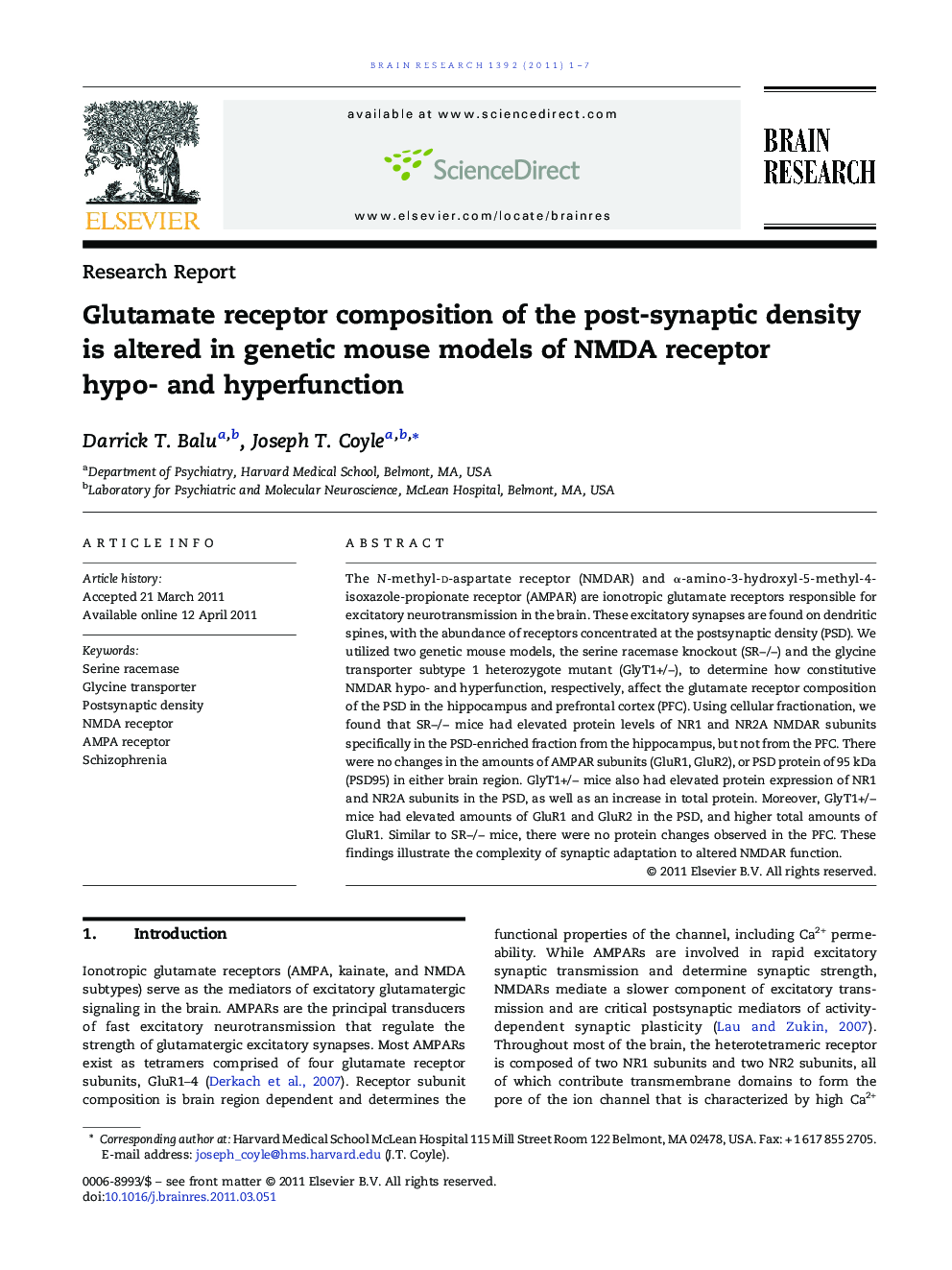| Article ID | Journal | Published Year | Pages | File Type |
|---|---|---|---|---|
| 4325923 | Brain Research | 2011 | 7 Pages |
The N-methyl-d-aspartate receptor (NMDAR) and α-amino-3-hydroxyl-5-methyl-4-isoxazole-propionate receptor (AMPAR) are ionotropic glutamate receptors responsible for excitatory neurotransmission in the brain. These excitatory synapses are found on dendritic spines, with the abundance of receptors concentrated at the postsynaptic density (PSD). We utilized two genetic mouse models, the serine racemase knockout (SR−/−) and the glycine transporter subtype 1 heterozygote mutant (GlyT1+/−), to determine how constitutive NMDAR hypo- and hyperfunction, respectively, affect the glutamate receptor composition of the PSD in the hippocampus and prefrontal cortex (PFC). Using cellular fractionation, we found that SR−/− mice had elevated protein levels of NR1 and NR2A NMDAR subunits specifically in the PSD-enriched fraction from the hippocampus, but not from the PFC. There were no changes in the amounts of AMPAR subunits (GluR1, GluR2), or PSD protein of 95 kDa (PSD95) in either brain region. GlyT1+/− mice also had elevated protein expression of NR1 and NR2A subunits in the PSD, as well as an increase in total protein. Moreover, GlyT1+/− mice had elevated amounts of GluR1 and GluR2 in the PSD, and higher total amounts of GluR1. Similar to SR−/− mice, there were no protein changes observed in the PFC. These findings illustrate the complexity of synaptic adaptation to altered NMDAR function.
Research highlights►d-Serine deficiency alters synaptic levels of NMDA receptors in the hippocampus. ►Glycine modulates NMDA receptor expression in the hippocampal postsynaptic density. ►Excess glycine up-regulates synaptic AMPA receptor levels in the hippocampus.
